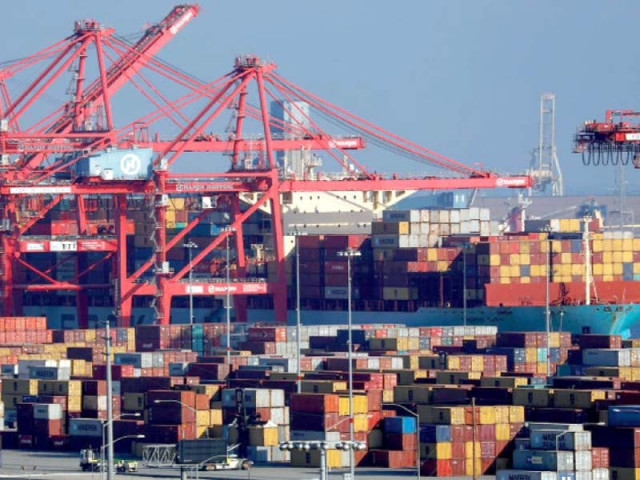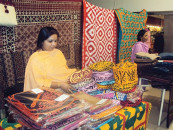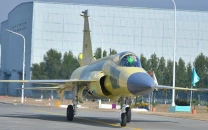Focus on improving productivity
It will ensure sustainable growth in exports, address external account challenges

My previous article, titled “Need for export-oriented strategies”, highlighted the low level of exports as a percentage of GDP in Pakistan and the importance of improving global and regional integration.
Pakistani producers must become more productive to achieve sustainable growth in exports. This will help address the external account challenges and escape from the vicious cycle involving a balance of payments crisis every few years.
Exports as a percentage of GDP were approximately 10% in 2020, according to the World Development Indicators, published by the World Bank. It was lower in 2017, at 8.3%.
Unfortunately, Pakistan’s exports-to-GDP ratio is one of the worst in the world. However, the recent uptick in exports is encouraging.
Exports in January 2022 were at $2.62 billion, according to the Pakistan Bureau of Statistics, which was 22.1% more than the value reported in January 2021.
Exports in the first seven months (Jul-Jan) of FY22, at $17.7 billion, were 24.5% more than the value reported in the same period of previous fiscal year.
Approximately 61% of total exports from Pakistan are generated by the textile sector. And approximately a quarter of exports from the textile sector are from the knitwear sub-sector, one-fifth from the readymade garments sub-sector, 18% from bedwear and 12% from cotton cloth sub-sector.
However, it is important to note that textile production in Pakistan is more likely to be dependent on natural fibres than manmade and artificial fibres. Although Pakistan is one of the largest producers of raw cotton in the world, it imported $920 million worth of raw cotton in the first seven months of FY22 while $446 million worth of synthetic fibre was imported.
The former increased 28.8% year-on-year and the latter rose 37.6% year-on-year. However, the quantity of raw cotton imports decreased 4.5% and the quantity of synthetic fibre fell 12.6%.
This suggests that although the value of imports increased, their demand in quantity terms decreased.
The same can be said for exports of knitwear, which decreased 7.9% year-on-year in the first seven months of FY22. This suggests that the price effect is likely to be prominent, particularly in imports of raw material and intermediate goods by the textile industry.
Policymakers must be cautious if the decrease in quantity of knitwear exports continues, particularly as regional competitors strive to regain the lost market share.
Imports increased 59.3% year-on-year in the first seven months of FY22. Imports of petroleum group, which is approximately a quarter of total imports into Pakistan, almost doubled in value.
The increase in quantity was much less than the increase in dollar value, which suggests that the change was driven by the price effect. Imports of machinery constitute a large proportion of imports, which include mobile phones, power generating machinery, electrical machinery and apparatus, and textile machinery.
This is followed by the food group, of which palm oil constitutes a major product.
The textile group, which includes raw material and intermediate goods for textile production, is also an important component of imports.
As indicated earlier, the increase in prices of several products has contributed to rising imports as the quantity of many goods has otherwise decreased.
A major anomaly in this fiscal year is the increase in imports of medicinal products, which rose 450% year-on-year in value in the first seven months of FY22 as they surpassed $3.3 billion.
In essence, curtailing the import bill through quantity restrictions may not bring the desired results as the change is driven by rising prices instead of quantity. Therefore, it is imperative to ensure a sustainable increase in exports.
Reviewing export strategy
First, the export strategy definitely needs a rethink. Exports from Pakistan are heavily concentrated in textile. Even within the textile industry, the exports are dominated by a higher input mix of cotton rather than other materials.
The top three products exported by Pakistan, as reported in Trademap.org by the International Trade Centre, within the textile industry and fetched more than $3 billion in 2020 showed a decrease in their global demand between 2016 and 2020.
The share of exports from Pakistan in products that have reported the highest increase in global demand between 2016 and 2020 is small.
Pakistani textile exporters must diversify into production of such products that have a larger proportion of manmade and artificial fibres.
Diversification is not only important across industries, as highlighted by many experts, diversification within industry into products that are experiencing high demand growth is also critical.
Second, it is imperative to ensure that the exporters participate in global value chains. One of the major drivers of export growth in Vietnam was the ability of its producers to convert imported inputs into exportable output.
This is not the case in Pakistan. The imported inputs in Pakistan are primarily used to produce finished goods that are sold locally. Producers of final goods are unable to compete in the regional and global markets.
Pakistani producers not only report low levels of productivity that prevent them from effectively competing in foreign markets but are also unlikely to produce goods of substantially better quality.
Poor levels of technical, non-tariff measures imposed on imports may result in imports of substandard products, adversely impacting their conversion into export products.
Third, high tariff rates for imports of goods reduce the pressure of competition on domestic firms that can otherwise force them to innovate and improve their productivity levels. Furthermore, the cascading tariff rates that lead to higher tariffs on imports of finished goods relative to imports of unfinished goods create an anti-export bias as domestic producers focus on selling to the local market than exporting their products.
Policymakers must not only negotiate more free trade agreements to boost participation in global value chains but also ensure low levels of tariff across products to eliminate the anti-export bias.
In summary, it is essential to improve the level of trade openness rather than focusing solely on increasing exports to ensure that domestic firms become competitive at the regional and global levels.
Higher the level of domestic productivity, greater will be the increase in exports.
The writer is the Assistant Professor of Economics and Research Fellow at CBER, Institute of Business Administration Karachi
Published in The Express Tribune, February 21st, 2022.
Like Business on Facebook, follow @TribuneBiz on Twitter to stay informed and join in the conversation.



















COMMENTS
Comments are moderated and generally will be posted if they are on-topic and not abusive.
For more information, please see our Comments FAQ